
Wednesday, June 9, 2010
Monday, May 3, 2010
Tuesday, November 10, 2009
Monday, September 14, 2009
CALL FOR CHAPTERS
Call for Chapters
New Paradigms in Virtual Leaning Initiatives in Academic Libraries
Submission Deadline
Nov 15, 2009
A Proposed Book Edited by
Dr. Jagdish Arora
Director, INFLIBNET Centre
E-Mail: jarora@inflibnet.ac.in
Dr. M S Rana
University Librarian
Banasthali University
Rajasthan – 304022
E-Mail: msrana_2007@yahoo.co.in
&
N. K. Swain
Assistant Professor
Department of Library Science
Vani Mandir, Banasthali University
Rajasthan-304022 (India)
E-Mail: nkswainlisfaculty@gmail.com
Introduction
Virtual learning has become a buzzword in academia. The Information Technology and its allied areas revolution have given new niches in the teaching-leaning world. The Library and librarian’s role is highly laudable in this regard. Many paradigms are created to co-up these developments. Several initiatives have been taken up for getting advantage of these progresses. Virtual learning especially in academic and more especially in university libraries makes the learners, administrators, policymakers an easy way to have advancement the learning world.
The Overall Object of the Book
This book proposes to address some aspects of virtual learning initiatives in general and Indian environment in particular. A collection of contributions will be of verities of people. An attempt is to make a study to fill an A to Z solution of the problem. The title will be addressed at the all kinds of problems involved in the process beginning with conceptual framework to practical implications including case studies.
Target Audience
This book will be of use to library professionals, information science & IT professionals, educational administrators, library authorities, researchers, faculties, university policy makers.
Recommended topics to be included
Access Services in the 21st Century
Collection Development
Competencies, Characteristics and Change
Consortia
Digital Information Sources
Digital Library: Concept and Development
E-books, e-journals, portals
E-References
Interface Design
Organizing Access to Digital Sources
Re-Engineering Library Education
Role INFLIBNET and other organizations
Searching and Browsing
Social Networking, Web 2.0, Blogs, RSS etc
Users and Services
Virtual Leaning: Concept and Development
VL Initiatives in University Libraries
VL Initiatives: Case Studies in India and
Any Area Suits to the theme
Submission Procedure
Invitation: Scholars are invited to solicit the manuscript clearly explaining the purpose and concerns of the proposed contributions on or before Nov 15, 2009. Authors of contributions will be acknowledged and the acceptance of the contributions will be reported in a reasonable period. The authors are advised to cooperate if the editor(s) need their support in terms of proof, clarifications, gaps etc.
Manuscripts: Original manuscripts will be accepted for consideration, which are not under consideration for publication elsewhere in any form.
Style manuals: Submissions must follow the styles outlines as suggested in the Publication Manual of the American Psychological Association, (www.apastyle.org), 2001, 5th edition.
Abstract: all manuscripts should include an abstract of 100 words or less along with prominent keywords.
Author identification: The complete title of the article and the name (s) of the author(s) should be only on the first sheet and the main text should state from the same sheet. Complete contact information must be supplied for all authors and co-authors, including full address and postal pin code, telephone and e-mail address. The corresponding authors should be identified.
Typescript: Manuscript should be typed on A-4 size paper, double-spaced, with generous margins at top, bottom, and sides of a page. They should be in IBM-compatible MS Word format. Subheadings should be used at reasonable intervals to break the monotony of the text. Words and symbols to be italicized must be clearly indicated, by either italic type or underlining. Abbreviations and acronyms should be spelled out at first mention unless found as entries in their abbreviated form in a standard dictionary. Pages should be numbered consecutively.
Length: Manuscript for book contributions should typically run between 10 to 15 pages including the reference list.
Notes and references: Notes are for explanations or amplifications of textual material. They are distracting to the readers and expensive to set and should be avoided whenever possible. They should be typed as normal text at the end of the text section of the manuscript rather than as the part of the footnote or endnote and should be numbered consecutively throughout the article.
A reference list at the end should contain only references that are cited in the text. Its accuracy and completeness are the responsibility of the author(s). Personal communications (letters, memos, telephone conversations) are cited in the text after the name with an exact date as far as possible. Examples of references to a book, a chapter in book, and journal article follow, formatted in APA style:
Example 1: Single author periodical publication.
Smith, A.J. (1993). Databases and organizations. Database Ideology Review. 16 (2), 1-15.
Example 2: Multiple authors periodical publication.
Smith, A.J., & Brown, C.J. (1991). Organizations and Database Management. Data Source, 10(4), 77-88.
Example 3: Books:
Smith, A.J. (1989). Database Booklet. New York: J.J. Press.
Example 4: Book chapter.
Crothers, E. (1972). Memory structure and the recall of discourse. In R.O. Freedle & J. B. Carrol (Eds.), Languages comprehension and the acquisition of knowledge (pp. 201-238). Washington, DC: Winson
State author’s name and year of publication where you use the source in the text. See the following examples:
Example 1: In most organizations, data resources are considered to be a major resource (Brown, 1992; Smith, 1993).
Example 2: Brown (1989) states that the value of data is recognized by most organizations.
The author’s name, date of publication, and the page(s) on which the quotation appears in the original text should follow direct quotations of another author’s work.
Example 1: Brown (1989) states that “the value of data is realized by most organizations” (p. 45).
Example 2: “In most organizations, data resources are considered to be a major organization asset” (Smith, 1993, pp. 35-36) and must be carefully monitored by the senior management.
Tables, Figures, and Illustrations: Create tables, figure, and illustrations in their electronic files, separate from the main text. (jhgYou may use one file for all the tables, but place each figure or illustrations in a separate file. Each table should begin in a new page). Figures and tables should be keyed to the text. Don’t describe the data in the text in such detail that tables become redundant. Figure captions should appear on a separate sheet, not on the original figures. One high quality, camera ready version of each figure must submitted with the manuscript; photocopies may accompany the additional manuscript copies. Composers will typeset the tables.
Note 1: Generalised writings are not encouraged.
Note 2: If any doubt(s) regarding the subthemes of the proposed volume it may be clarified through either of the editors preferable electronically before writing the article.
Submissions can be forwarded electronically (Word document or pdf.) or by post to:
N. K. Swain
603, Gautam Buddh Niwas,
Banasthali University
Rajasthan-304022 (India)
M: 09414543231
E-Mail: nkswainlisfaculty@gmail.com
Access: nkswainwikispace.com
http://nirmalkumarswain-liseducation.blogspot.com/
Saturday, July 11, 2009
IFLA 2010
IFLA 2010
Dear AllThis is good to know that professionals have shown their resentment over shifting of IFLA 2010 from Austalia to Sweden. Yes there is a genuin reseaon for the resentment as no logic choosing Sweden. Kuala Lumpur loss the bid in voting to Brisbane and rationally Malayasia should have been asked to host. If there were refusal the IFLA GB could have choosen their own. To my mind the IFLA should come forward to respond people with genuin amswer to all such resentments and keep the status and dignity of IFLA as an international and apex organisation .N K SwainBanasthali University (India)
Dear AllThis is good to know that professionals have shown their resentment over shifting of IFLA 2010 from Austalia to Sweden. Yes there is a genuin reseaon for the resentment as no logic choosing Sweden. Kuala Lumpur loss the bid in voting to Brisbane and rationally Malayasia should have been asked to host. If there were refusal the IFLA GB could have choosen their own. To my mind the IFLA should come forward to respond people with genuin amswer to all such resentments and keep the status and dignity of IFLA as an international and apex organisation .N K SwainBanasthali University (India)
Wednesday, January 28, 2009
Mumbai University
The circular of Mumbai University (Circular No. 32 of 2009 dt. 19th January 2009) about the educational qualification for Librarians in Engineering and Management Colleges.It states that NET/SET is an essential qualification for the post of Librarians in Engineering / Management Colleges, but candidate having first class in Library and Information Science Masters can be exempted from NET/SET..The Circular is available on our group and the link to it is available on www.mlsc.co. nr..
Subscribe to:
Posts (Atom)
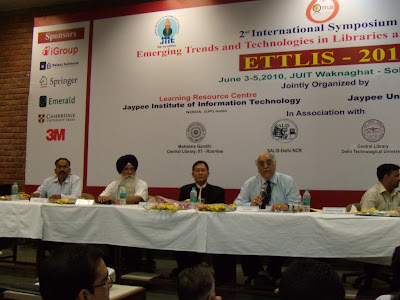
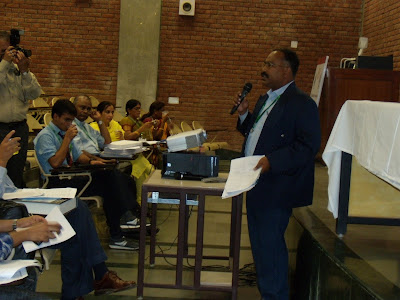
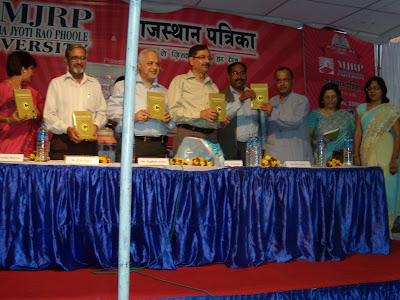
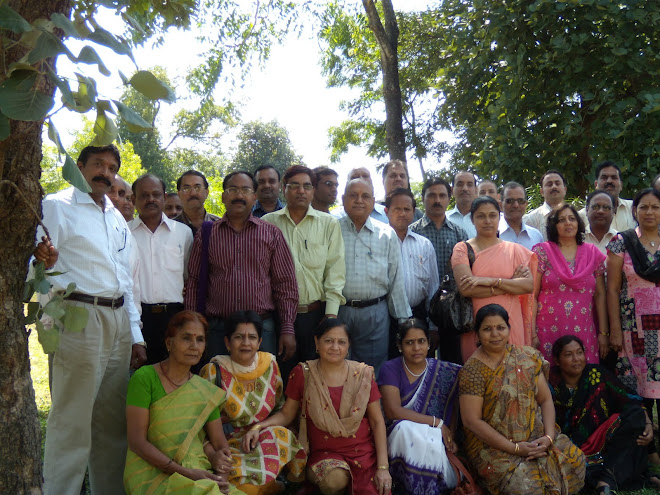
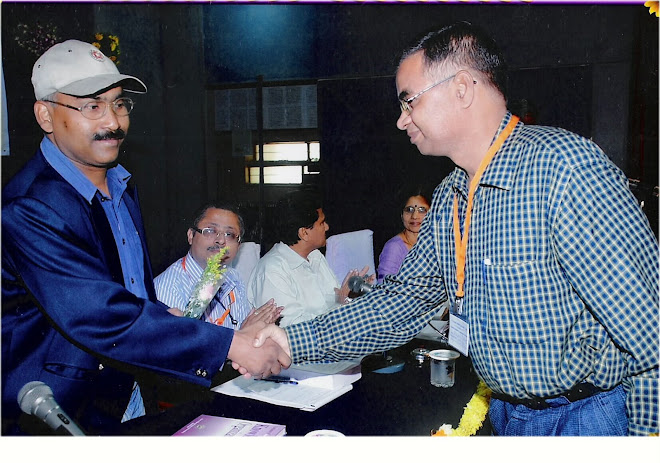


,Raporteuring.jpg)